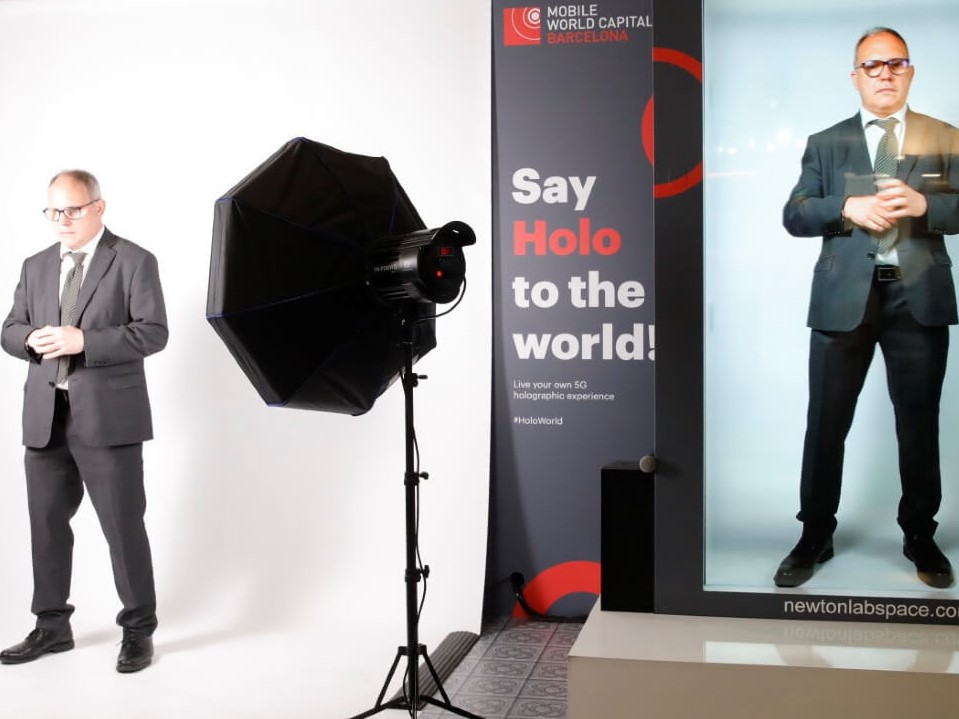

The Mobile World Congress (MWC) in Barcelona is the world’s largest event in the mobile technology industry aimed at professionals in the sector. Every year, the MWC brings the latest in innovations and technology from more than 2,000 leading companies and organizes an extensive, high-quality conference programme.
Wideum wouldn’t dare miss this exclusive opportunity, and we attended the exhibition this year with the double objective of firstly, showcasing our technology while secondly, exploring the 5G/connectivity industry. We couldn’t be more excited about what we have seen and the incredible shake-up that it will be bringing to our company and sector:
5G enabled devices can offer ultra-high-definition picture and could revolutionize communications, health, and education. The best example is the Portl, a hologram system that provides ultra-high-definition video which can provide interaction between people from anywhere in the world. The device can “transport people from one part of the world to another,” given the extremely high-quality picture and immediacy of the communication it offers.
For the assisted reality industry, the device will revolutionize the remote support services offered by an equipment manufacturer. How so? By connecting its user remotely with a technician, thereby providing immediate face-to-face support from an expert, anywhere in the world. Virtual reality and tele-presence are here to stay.
Read here how world leader Ericsson is innovating in this field.
More than a mere concept now, the conversation when referencing ‘the cloud’ is about figuring out the fundamentals businesses need to start doing in order to rewrite all of their software and begin rethinking how they use their networks. Many telecoms and software providers are embracing an open hybrid cloud model to deliver future services, without the need of having resident applications or even hardware. For remote support technology, the opportunity is to enable any kind of device –smart glasses, wearables, mobiles, tablets or other types of hardware– to perform remote and virtual tasks like maintenance or urgent repairs. The challenge will be how to guarantee cyber-security and data protection.
Industrial digitalization is accelerating, and one way to solve the cyber-security challenge for connectivity and data protection is to create wide and broad private networks. By 2030, there will be 4.7 billion wireless modules across manufacturing floors, with a value of over US $1 trillion. And it is this seamless connectivity that is ushering in a new paradigm in manufacturing. With the power of 5G widely available, the demand for the advanced connectivity that private cellular networks can deliver is growing exponentially.
During the four days of MWC in Barcelona, we began to surmise that the start-up ecosystem for new applications is at a fever pitch. The number of remote service technologies amassing in the maintenance service market has grown sharply in the past five years. Workflow and process automation, healthcare related applications and remote diagnostics are just some of the most exciting innovations we have recently witnessed. Combining 5G cellular connectivity with innovative devices plus the software of industry experts and system integrators like Wideum, equipment manufacturers will benefit from efficiency-boosting applications for Remote Service, Assisted Reality, Artificial Intelligence, Augmented Reality and Robots.
At Wideum, while we can’t fully predict what the future will look like in the tech and connectivity sectors, we do know that, four years from now, we will be playing in a much bigger arena, and it is all thanks to the hyper-fast development of our industry and its growth.
Take a look at our summary of this year’s MWC in Barcelona and count the number of times Virtual Reality is on display!